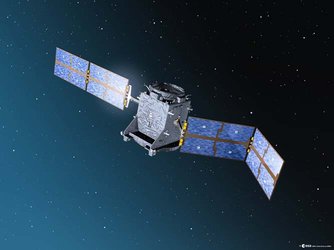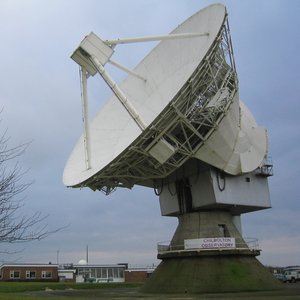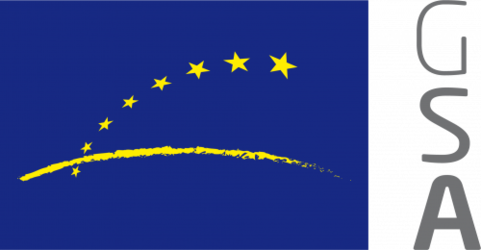GIOVE-B arrives at ESTEC for final tests
GIOVE-B, the second experimental satellite in the Galileo Programme, has arrived at ESA's European Space Research and Technology Centre in Noordwijk, The Netherlands, for its final tests.
An industrial consortium led by EADS Astrium GmbH was responsible for the construction of
Compared with
- a passive hydrogen maser, used as a precise time reference
- a different type of navigation signal generator
- solid-state radio transmitters
- a different design of L-band antenna to broadcast the navigation signals
- an alternative type of radiation monitor to continue characterising the environment in medium-Earth orbit
The combined in-orbit experience gained with

The GIOVE-B spacecraft has recently completed its thermal vacuum test, which simulated the heating and cooling conditions it will encounter in space, at the Thales-Alenia Space facilities in Rome. It has been delivered to the European Space Research and Technology Centre (ESTEC) for final testing in the ESTEC Test Centre.
The final test campaign will include:
- vibration and acoustic tests
- an electromagnetic compatibility test and passive intermodulation tests
- electrical fit checks with the launcher adapter
- a solar array deployment test
- interface tests with the ground operations centre, under the responsibility of Telespazio
- alignment checks
- propulsion subsystem functional tests
- final satellite-level performance tests
At the end of the test campaign at ESTEC, currently expected in mid-November 2007, the satellite will be transported to the Baikonur Cosmodrome in Kazakhstan. There, the launch campaign will be commenced, leading to a launch by the end of the year aboard a Soyuz-Fregat launcher.
In 2009, the first two satellites of the operational Galileo constellation will be launched, followed by the second two operational satellites in 2010. They will be used for in-orbit verification of the Galileo system design before being joined by the 26 additional spacecraft required for full operations by the end of 2013.
Galileo is a joint initiative between ESA and the European Commission. When fully deployed in the early years of the next decade, it will be the first civilian positioning system to offer global coverage.















 Germany
Germany
 Austria
Austria
 Belgium
Belgium
 Denmark
Denmark
 Spain
Spain
 Estonia
Estonia
 Finland
Finland
 France
France
 Greece
Greece
 Hungary
Hungary
 Ireland
Ireland
 Italy
Italy
 Luxembourg
Luxembourg
 Norway
Norway
 The Netherlands
The Netherlands
 Poland
Poland
 Portugal
Portugal
 Czechia
Czechia
 Romania
Romania
 United Kingdom
United Kingdom
 Slovenia
Slovenia
 Sweden
Sweden
 Switzerland
Switzerland

































